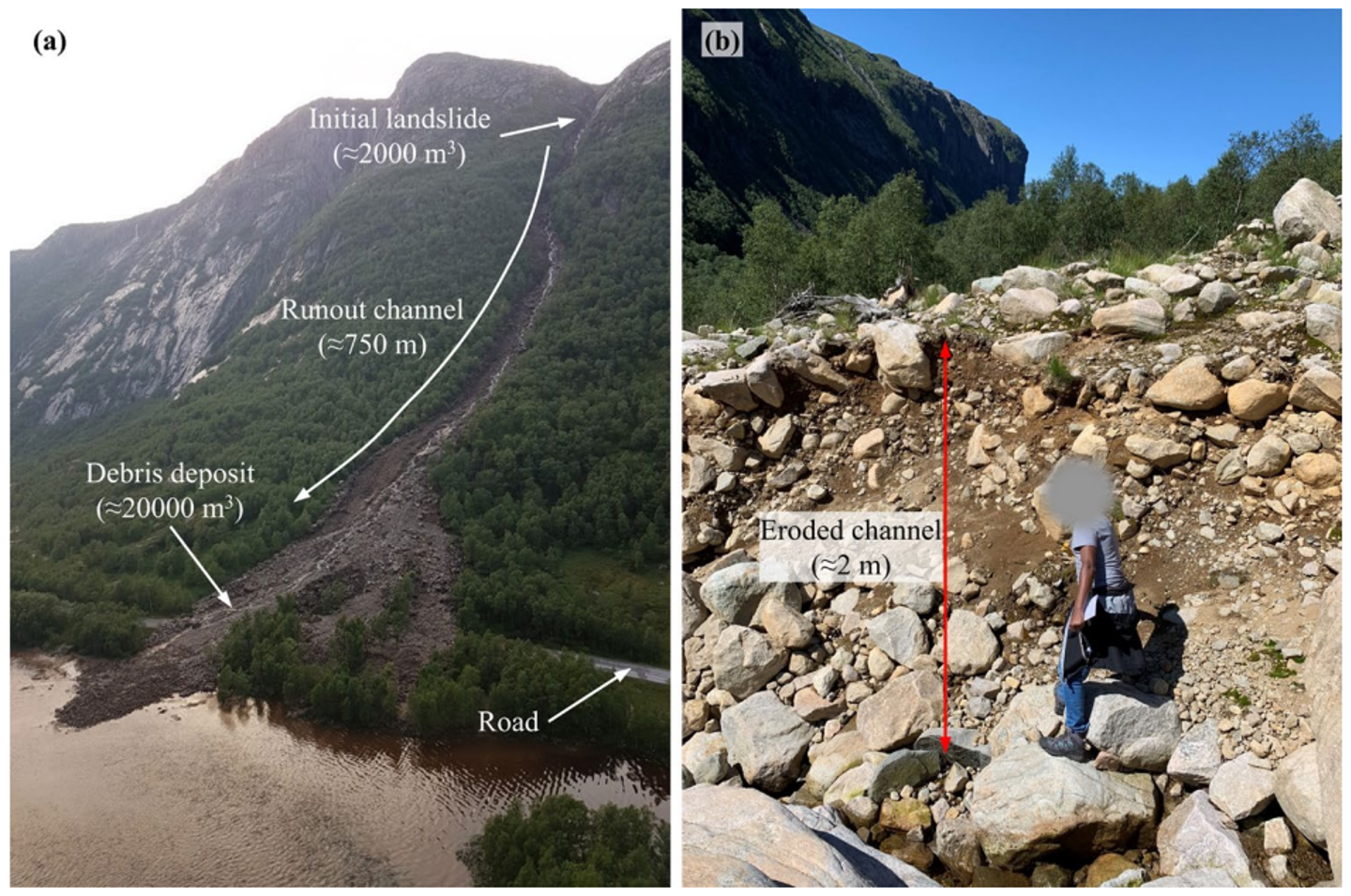Numerical modelling of debris flow entrainment
The main objective of this master thesis is to better understand and model the entrainment of wet beds by debris flows.

Debris flows typically grow in size by eroding soil, fluid and boulders along the channel flow path (e.g. Figure 1). Two main mechanisms have been reported to cause entrainment: (i) the shearing and colliding effect of a debris flow onto the channel bed; (ii) the increase in pore pressures in the erodible bed and therefore the decrease of the bed shear strength.

Figure 1. (a) Hunnedalen debris flow; (b) Erosion of the channel. (taken from Vicari, H., Tran, Q.A., Nordal, S. Thakur V. MPM modelling of debris flow entrainment and interaction with an upstream flexible barrier. Landslides (2022).
Existing numerical models typically model the erodible bed as an equivalent one-phase material, where the shear strength is back-calculated to reproduce the observed entrainment volumes. Hence, the development of excess pore pressures in an erodible bed cannot be captured explicitly.
Instead, a two-phase (solid + water) numerical model would allow us to explicitly simulate the pore pressure increase in the erodible bed and its effects on entrainment and debris flow runout.
We will guide students using a two-phase model within an in-house material point method software to simulate debris flows.
The students can choose to:
- review the literature on debris flows and numerical modelling
- evaluate the material parameters influencing the pore pressure increase and entrainment
- perform the numerical simulations of debris flows and entrainment: parametric analysis of the material parameters applied to a case study/simple configuration
- quantify the critical conditions for debris flow entrainment or
- depending on the findings, the work may result in a scientific publication.
